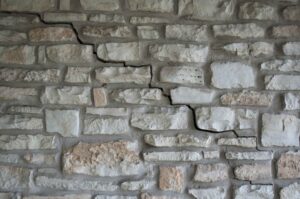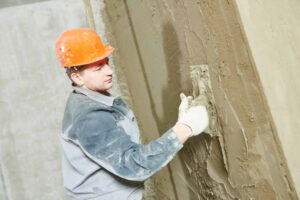Parging Failing Reasons
Whether you want to hide surface imperfections on your walls or level the walls to improve the current look, parging is an excellent option. This is in addition to strengthening your walls through a stronger layer of mortar. An additional protective layer of coat also protects your building from adverse weather through air tightening. It also waterproofs your house.
However, sometimes parging fails even after the resources, time, and energy invested in adding that extra coat. That’s why it’s important to engage a stucco company to ensure the delicate process is done professionally. When done right, parging should last at least thirty years with a few touch-ups once in a while.
Below we look at five key reasons why parging fails.
Poor Preparation
This translates to two things: poor parge preparation or poor surface grooming. Before application, the walls need to be well cleaned and free from dirt and sand. We also remove coatings such as paint to ensure the surface is completely smooth. Before the mixture is applied, the surface has to be moistened. This continues during the curing period, where the parging has to be moistened periodically. This also prevents the mixture from drying out.
Materials
We ensure the right materials are used for parging. This includes sand, Portland cement, and lath materials. Using the right materials ensures a strong lining that lasts for years.
Expired Parge/Mortar
Parge is in optimum condition within an hour after preparation. If not used within this period, there will most likely be issues as the mortar dries very quickly. The ready mortar should also be used within twenty minutes for the same reason.
Weather Conditions
Parging is affected by extreme weather conditions. During the cold season, it soaks due to excess water, and this causes cracks. Hot weather conditions at the same time affect the curing process making bonding ineffective. We also ensure temperatures are maintained at 5°C during application and curing. This is the lowest temperature allowed
Mixing
Various aspects are affected when mixing the mortar. These include the amount of water, sand, chemical additives, and air. Every component has to be carefully considered to ensure the mixture turns out perfectly. If the sand is too little, the mortar does not stick to the surface after application but drops to the surface. If it’s in excess, it makes the mixture very weak and brittle.
To ensure we have the right mix, we use a trowel to test the new mixture. A plastic consistency that resembles mud is perfect. We use air entrainers that relieve pressure caused by freezing temperatures. This enables the concrete to freeze without breaking.
Parging is not a simple process as it looks from the outside. Always consult a professional who is well versed with the process, especially when it comes to the mixing and surface preparation stages. At Dependent Exteriors, we do not only beautify your existing building. We demolish and repair, upgrade both the color and design of your walls, and repair shrinkage.
For more info go to https://dependexteriors.com.
Depend Exteriors
8615 176 street
NW Edmonton AB T5T 0M7
7807103972




